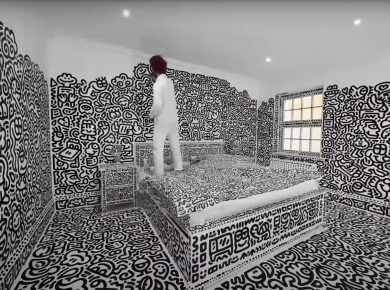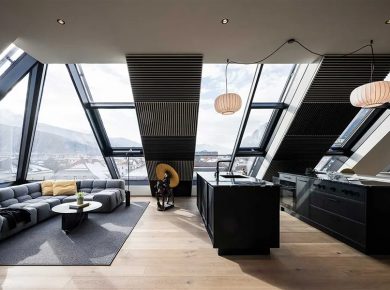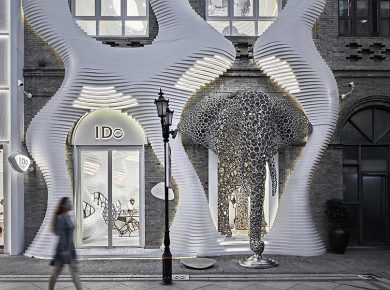
The word hygge has come into prominence over the past few years, however, the practice of hygge has been around for generations. Deriving from the 16th-century Danish term "hugga", hygge is a Danish and Norwegian word used to describe the feelings and moods associated with and created by coziness.
Hygge means to enjoy the simple parts of life, like the moments on your couch when you’re reading a book, snuggled under a blanket, sipping on something warm; without even noticing, you’re experiencing hygge. In Danish, hygge is a word that embodies coziness and comfort. Therefore, designing with hygge in mind is more about creating an experience and less about throwing nice furniture together in a stylish way. To create hygge in your home, focus more on the experience and less on aesthetic appearances.
Embracing hygge is a hugely important part of being a proud Dane. According to Meik Wiking, the CEO of The Happiness Research Institute in Copenhagen, hygge is so important to Danish culture that it’s considered a defining feature of the cultural identity. He considers it an integral part of the national DNA of the Danish. And the Danes may be onto something – Denmark is consistently deemed one of the happiest countries on earth and happiest places to live.
But how exactly does one incorporate hygge into their home design? It may seem intimidating at first, but with a few changes to your current space, you’ll be able to embrace the hygge lifestyle in no time. Below we give you five easy ways to incorporate hygge into your home design to make your space comfier than ever.
1. Embrace Natural Light
The more natural light you can let into your living space the better for hygge. The hygge design encourages embracing soft, natural lights to create ambient glowing spaces. If you have lots of window space, add some light curtains to your space that can stream light through. If your living space is sparse of windows to allow natural light in, think about fixing a mirror across from your mirror to reflect more light in. This mirror technique can also help make your space feel bigger.


2. Incorporate a Warm, Neutral Color Palette
Along with your natural lighting, you should try to create a warm and neutral color palette for your space. Hygge color schemes are simple and include many earth tones and soft colors. Seek out a hygge color palette and see which colors fit your space. You can blend colors to increase hygge. Many people choose to paint their walls a neutral color such as cream or beige and continue their choices from there.


3. The More Candles, The Better
Ambient light is one of the most important parts of creating a hygge lifestyle. When the sun goes down, try lighting your space with candles. You can choose from different scents and sizes to space out around your room or home. Candles can create a soft glow and replace your evening reading lamp.
Be sure to handle candles with care and caution, always remembering to extinguish them before leaving the house or falling asleep. There are fake candles that can also be used in apartment or condo complexes that do not allow for real candles to burn. These are a great option to add ambient light to your space as well.


4. Create Cozy Nooks
The feel of coziness is the embodiment of hygge, so it makes sense that somewhere in your home or room you should have a cozy nook for hiding away with a good book, your iPad, a cuddly pet, or even just to sit in silence and reflect on your day. Most people start with a reading nook in their living or day rooms.


5. Add Fluffy Blankets
Put a comfy chair, some chunky and soft blankets, pillows that make you want to melt into the seat, and candles around the area and you’ll be ready to enjoy the most hygge of spaces in your home. Retailers like Bouclair ( www.bouclair.com) offer a variety of hygge-themed furniture for the perfect cozy nook


6. Add Nostalgic Elements
Hygge is about the way things in your home look and how those things make you feel. Nostalgic items, such as pictures of friends and family, old pieces of furniture that have meaning to you, or any items or decor features that make you feel at home and at peace.


7. Incorporate Vintage Touches
Incorporating pieces that have history will increase the emotional value of the space for you while also enhancing the hygge style. Vintage pieces, like a Victorian wall clock or a delicate tea set, can help add some charm and character to your space while increasing the hygge of it. Check for local vintage sales to add some fun decorative pieces to your hygge creation.


8. Add or Accentuate a Fireplace
Fireplaces of all kinds are synonymous with cozy. There’s nothing quite like sitting around a fire, wrapped in blankets and sipping hot chocolate. If you already have a fireplace, think about how you can highlight it in your home. If you don’t, consider adding one. Explore real fireplaces and faux fireplaces, and get quotes from several contractors if you want to install a fireplace.


9. Bring the Outdoors In
Nature is a big part of hygge. Find unique ways to bring the outside in. Natural wood, plants, and flowers are great starting points. Use these natural elements to create an environment that evokes the spirit of the great outdoors and adds a breath of fresh air to the space.


10. Consider Scents
Smell is one of the most important senses we have. It shouldn’t be left out of the equation when it comes to hygge. Think of the scents that create comfort, like lavender, sage, cinnamon, and rosemary. Use scented candles, flowers, oils, and herbs to infuse your space with cozy scents. And of course, other natural scents, like freshly baked bread or cookies, will make all the difference.

Images source: pinterest.com




